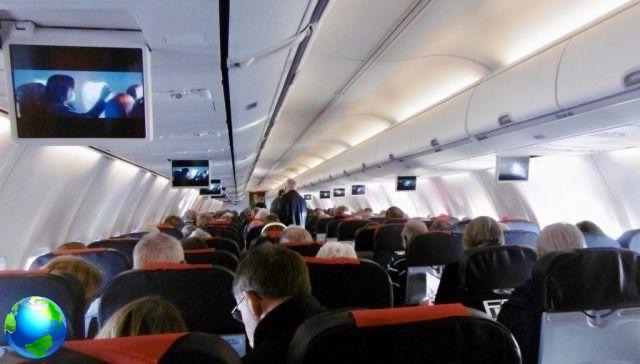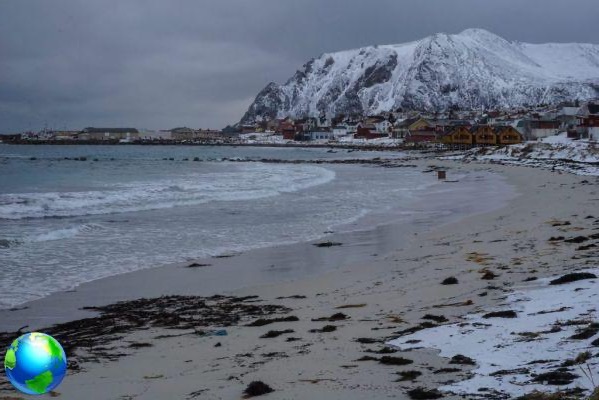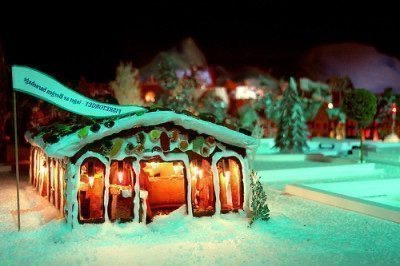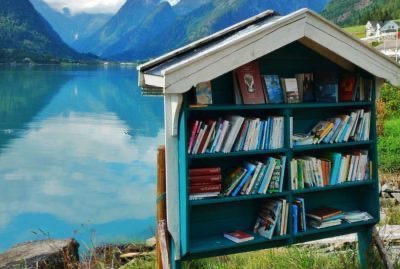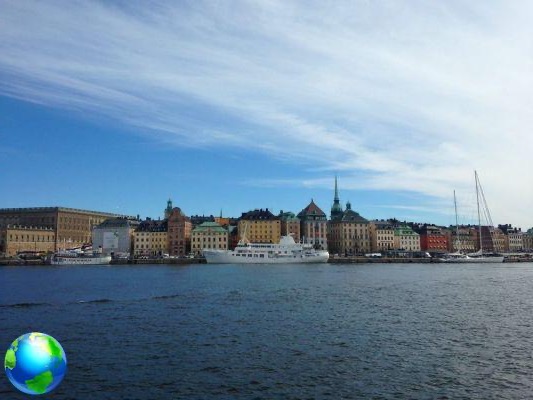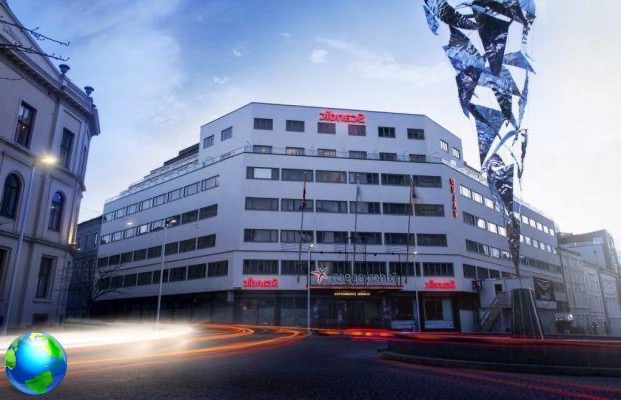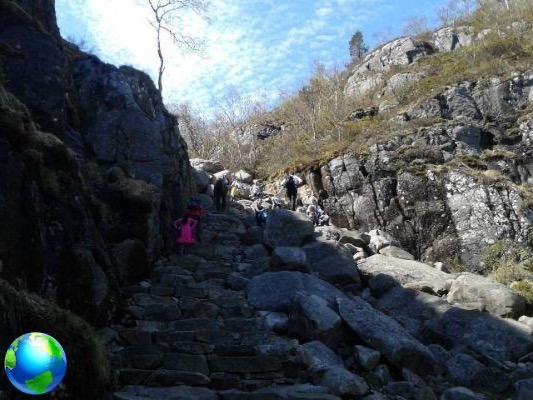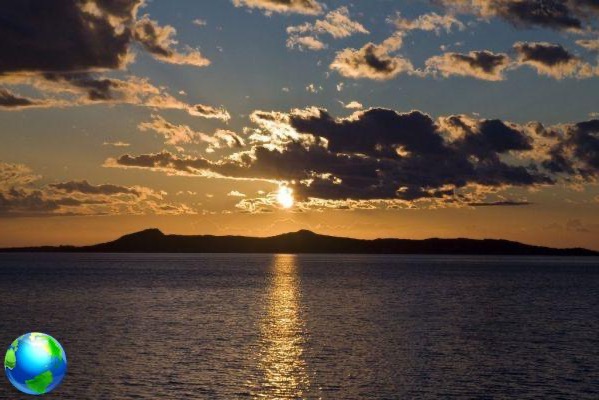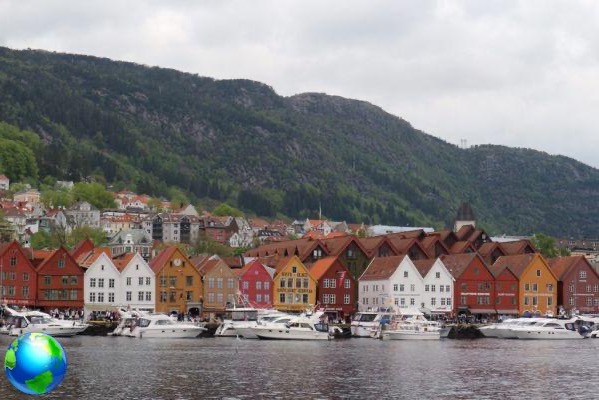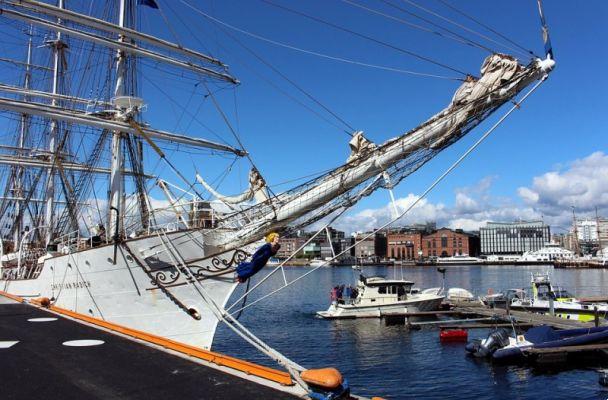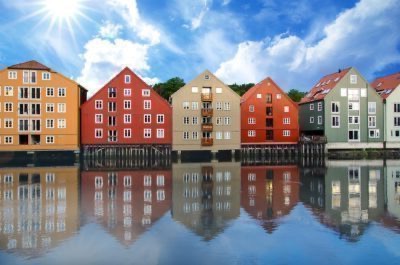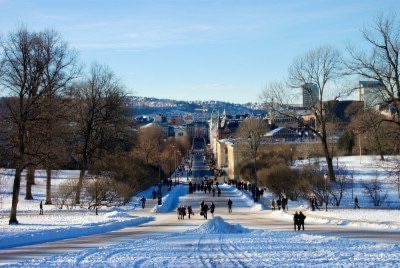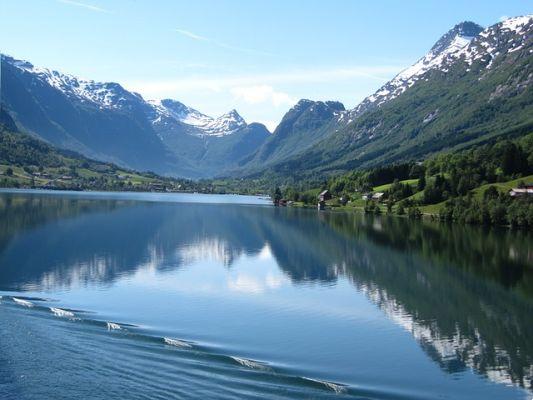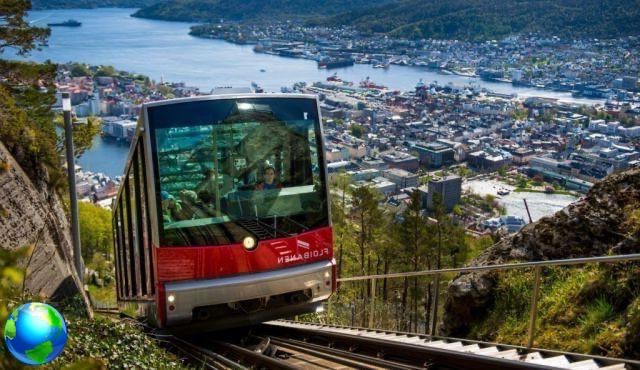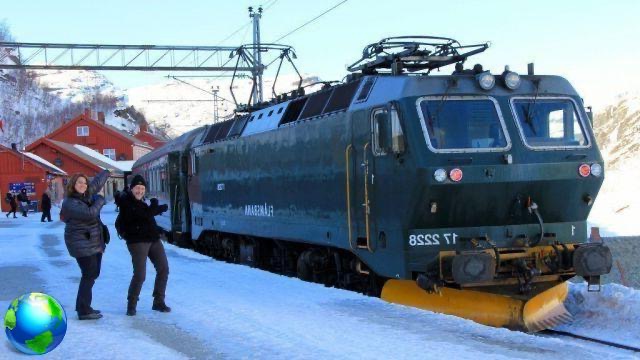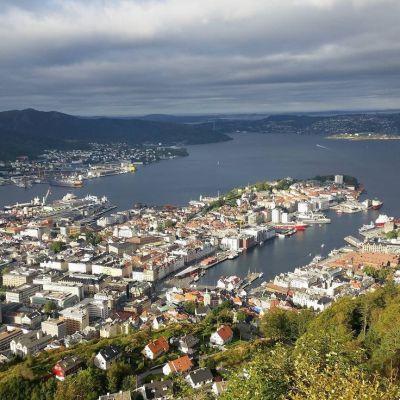Norway, an incredibly fascinating country, with lots of nature and incredible views. Here are three villages to visit if you want to see something truly typical in Norway.
There was a time when my coworkers often asked me if I had a secret husband or boyfriend in Norway. For them, every opportunity was good to ask me how "Ole" was, or to talk about me as our friend who lives in Italy but who has a family in Scandinavia.
For me, every opportunity was good to catch a flight to Oslo, Bergen or Stavanger. But not to see an elusive boyfriend: because it is not towards a person that the spark is struck, but towards an entire country.
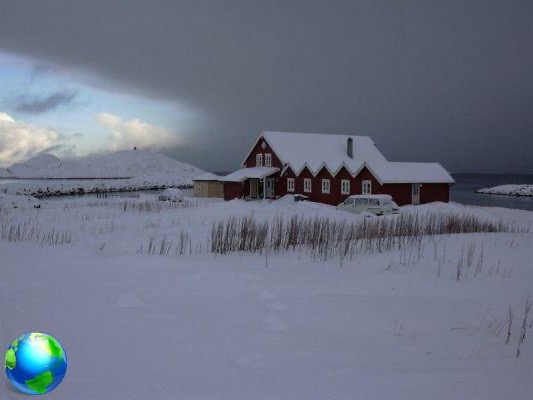
As soon as the opportunity arose, I left for a producers' event, a congress on gastronomy, a gathering of experts in the history of cod. Once I even convinced my boss to send me to the stockfish festival in Bergen to help a fishing cooperative sell its products during the event. We worked eighteen hours a day, along the Bryggen, with the cold air lashing the skin and the rain of ice slipping into the collar of the jacket. In the evening I returned to the hotel exhausted but happy.
Undredal
But my love at first sight with Norway is earlier: it dates back to a trip a few years earlier, organized to interview goat farmers and cheese producers in Undredal, a tiny village where 100 people and 400 goats live. Located at the far end of the Sognefjord, the longest fjord in Norway, the village remained in near total isolation until 1982, when the first road was built.

Until then, Undredal was reachable only by boat. This meant that the landscape characterized by the mountains overlooking the sea and the small wooden houses clinging to the fjord remained almost unchanged.
It is here that I meet Pascale Baudonnel, a French breeder who had moved to the fjords in the XNUMXs for research on animal husbandry in Northern Europe. She had only intended to stay for a few months, but her love for the country and for the goats - but especially for Ivar, who later became her husband - have kept her here ever since. Pascale and a group of other inhabitants introduce me to the magnificent place they live in: we start from the "center" of the village, where there are a handful of houses and theUndredalsbui, the only shop within a kilometer radius that, unsurprisingly, sells a bit of everything: from groceries to clothing.

A few hundred meters away is there Stave church, a small wooden church painted in white, as you see so many along the Norwegian fjords. But this is different from the others: with its twelve meters long by four wide, it is the smallest not only in the country, but in the whole Scandinavia. From the church we continue along the only road, direct to the Stølsysteri, the tiny dairy where the farmers of the village bring the milk of their goats and transform it into the various cheeses then distributed in the region: they range from the classic Undredalsost, a white cheese made from goat's milk and veal rennet, to the most particular Geitost, a cube-shaped brown cheese, whose color derives from the particular caramelization process that occurs during the boiling of the whey.
During the day I ask myself several times where I will spend the night, doubting the existence of accommodation facilities in such an isolated place. Undredal is a small town with a thousand surprises: it offers the possibility to choose between different places to stay. A room was booked for me atUndredal Gjestehus, a small guesthouse with three apartments overlooking the fjord, but alternatively you can also choose one of the eight rooms of Visit Undredal.

Sørøya
I left another piece of my heart far north, in Glacial Artic Sea. Barely a thousand people live in Sørøya, a small island with only three settlements: Hasvik, Breivikbotn and Sørvær. There are no bridges or tunnels connecting it to the mainland, so the only options to get to the island are by ferry from Øksfjord, or by plane from Hammerfest. I arrive in a twin-engined Widerøe propeller, leaving Trømsø early in the morning and arriving in Hasvik after a stopover in Hammerfest.
It is a February morning and the runway of the small airport is covered in ice and snow, as are the narrow, winding streets of the island. There isn't much else in Hasvik, Albjørg explains to me: while she drives her off-road vehicle, I watch the extreme landscape flow past the windows: the wooden houses colored with the snow that reaches beyond the windows on the ground floor, the inlets with the small fishing boats, the dark gray sea, almost purple, like the sky above us. My guide explains to me that the island is also known by the name of little Lofoten.

I've never been to Lofoten, but deep down I imagine them a bit like Sørøya. Apparently the difference is in the climate: Lofoten, being further south, boast a milder climate and more favorable currents. Here everything is more complicated: more insulation, more rigid climate. Our first stop is the village of Breivikbotn, where Albjørg works in a stockfish production plant which, according to the locals, is better than the one on the more famous islands. The fishermen deliver the cod to the Breivikbotn factory, where the women take care of the processing: two fish of identical size are tied together at the height of the tail and hung on the hjeller, the wooden racks where they are dried.
At the end of the visit we move to the village of Sørvær, on the western tip of the island. Here everything seems even more extreme: the white snow, the leaden sky. Maybe with just 200 inhabitants, Sørvær is the smallest village, it will be because everything is made even darker by the silhouette of the wreck of the Russian ship Murmansk, stranded a few miles from the coast, but the fact is that I can't resist the fascination exercised by this place forgotten by any divinity.

However, I realize that I am hopelessly in love only later, when the villagers let me attend a sled race: all in complete darkness, at least ten degrees below zero.
The route is short and the race does not last long, and at the finish the competitors are greeted by the crowd with glasses of aquavit, a distillate of wheat and potatoes. There are no restaurants or cafes here, so the dinner was organized in a place that looks like a cross between an old cinema and an oratory, where the women cooked Codfish balls, reindeer suovas, whale and seal meat. After dinner I return to my hotel, the Sørvær Gjestehus, a not very large but comfortable structure. Apparently it's the only hotel, but the islanders are very welcoming and Albjørg explains to me that in the summer months many open their homes to tourists who come here for cod fishing.

Ulvik
The last village to conquer me was actually one of the first I visited on a trip to Norway. Ulvik is a small village along the Hardanger Fjord, just over two hours from Bergen. Ulvik doesn't have extreme scenery like Sørøya Island, nor has it been isolated for years like Undredal. On the contrary, the village looks like something out of a fairy tale, with its hills dotted with orchards.
Indeed, Ulvik is the city some apples and cider: in September, in addition to celebrating the harvest season, the poetry festival dedicated to the poet Olav H. Hauge, born right here. You can visit the poet's birthplace, as well as the church, designed by the same architect who designed Oslo Castle, and the old Skeie mill. I am here to interview the cider producers, which have given new life to the production of this drink in recent years after the setback suffered in the XNUMXs due to the introduction of the Monopoly.

Hardanger Siderprodusentenlag growers grow apples along the fjord and make cider using traditional methods. After meeting the farmers, I move to the shore of the fjord, where the main hotels of the village and a couple of restaurants are located. The landscape here is gentle, almost delicate, compared to the extreme one of Undredal or that of Sørøya: the mountains behind us are relatively low and gradually slope towards the fjord.
A boat from Hardangerfjord Vilfisklag, the Hardanger County Fishermen's Association is moored at a small pier: they take me for a ride along the fjord of the same name to show me how they fish for wild salmon and sea trout. Pål, a Bergen chef from Ulvik, cooks them for me, where he still owns a cottage where he spends his holidays. Both he and the other people who guided me wanted to take me to dinner at Fjord Kafé, which is apparently the best restaurant in Ulvik, but sadly it's closing day, so Pål and some fishermen prepare marinated salmon and trout for me, fenalår (a salted and smoked lamb sausage) and potato salad.

After dinner, I walk back to the house of Helen, the owner of Uppheim Farm, the gjestehus where I spend the night. It is located about a quarter of an hour from the center itself, where the Brakanes Hotel Rica and l 'Ulvik Hotell, the two main accommodations in the village, but the landscape is worth the stroll along the winding road to Uppheim Farm. The farm is located in the middle of the fir woods, and from my room I have a wonderful view of the fjord, a few hundred meters below. I can't help but think that heaven doesn't have to be very different from Norway.
The first photo is from www.grantdixonphotography.com.au




